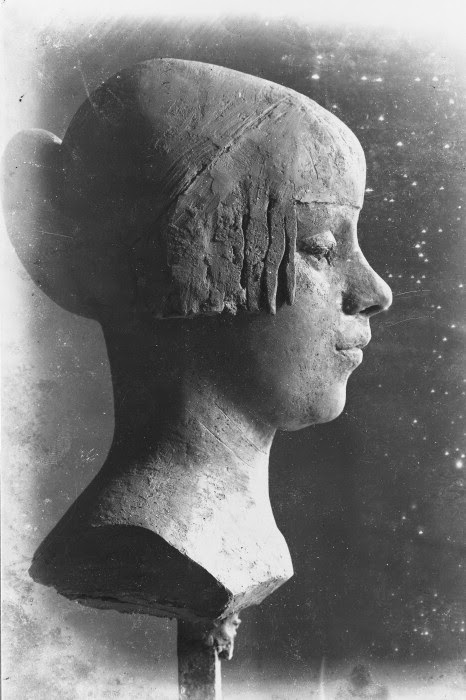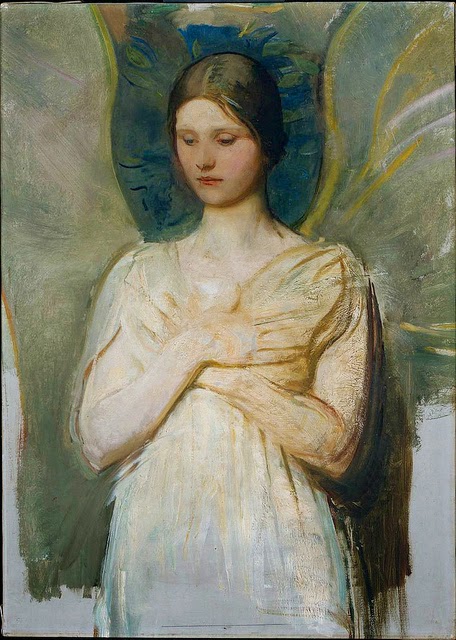A more detailed biographical sketch is here. Below are various portraits of Iris.
Photo by Man Ray - early 1920s
Iris Tree had an interesting face that Man Ray captured nicely.
Photo: Lytton Strachey and Iris - ca. 1930
Perhaps taken at Ham Spray. Compare Iris' figure with 1915 portraits below.
Iris and Dora Carrington - ca. 1930
Taken the same day as the photo above. The Wikipedia entry on Carrington is here.
Sculpture by Jacob Epstein
Epstein made at least three sculpture portraits of Iris.
By Vanessa Bell - 1915
Now for three portraits made in 1915 by central members of the Bloomsbury set. (Vanessa was the sister of the more famous Virginia Woolf.)
By Duncan Grant - 1915
Grant was the love of Vanessa's life and the father of her daughter, even though he was homosexual. (Bloomsbury relationships are extremely complex, and are touched on in several of the Web pages linked here.) This painting and the one above seem to have been made at the same sitting: note the setting and differing points of view.
By Roger Fry - 1915
Fry was a more marginal Bloomsbury figure, though he did have an affair with Vanessa. As with the two paintings shown above, Iris was about 18 years old when she sat.
By Adolphe Borie
I'm not sure if this was painted in America or Paris.
By Augustus John - 1920
In my judgment, John was a better artist than Bell, Duncan, Fry and Borie, so this is the best portrait of the bunch. He knew Iris since she was a girl.
Drawing by Augustus John
Another nice image by John.
























%2B-%2Bc1905.jpg)
















%2B-%2B1903.jpg)
















